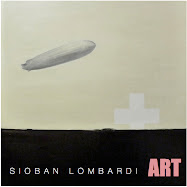
Francis Bacon, The Centenary Retrospective currently on view at the Metropolitan Museum of Art contains the largest collection of the painter’s work amassed for exhibit in twenty years. The exhibit, arranged chronologically throughout ten galleries, is epic in scale and presentation, with nearly all of the work presented in gilt frames. Codified by images of distorted and bestial figures; screaming Popes; rabid animals, and carcasses of beef arranged on cage-like platforms, the brutal, existential world Bacon painted is revealed through sources and depicted in images, themes and formats he repeated incessantly.
The first work one encounters is Study for Three Figures at Base of Crucifixion, 1944. A triptych, the work declared Bacon’s painting career when exhibited in London in 1945. Bacon employed triptychs throughout his career as an allegorical, non-narrative device. Historically, the figures represented at the base of the crucifix were: Mary, the mother of Jesus; Mary, the mother of St. James, and Mary Magdalene. Here the isolated figures, each depicted on an acidic orange ground, are anthropomorphized only through their gaping, tooth-filled mouths. The monstrous remains reflect man’s inhumanity in the wake of horrors of war still experienced in Europe. What is seminal about this work is the foreshadowing of several key components in Bacon’s work: the triptych; the gaping mouth; the bestial or distorted figures and the stages on which they exist.
The second gallery is devoted to heads, another insistent subject in Bacon’s work. Here one first encounters his source material of earlier painted masterworks, films, photographs and the sequential, figurative photography of Eadward Muybridge. The work Painting, 1946, depicts a tweed-clad figure, an umbrella, and flayed carcasses of meat. The painting also introduces the restrictive platform so frequently articulated in Bacon’s work. This device may be drawn from Bacon’s experience as a furniture designer whose wares were often displayed in vignette on raised platforms. What is inescapable is Bacon’s essential “Englishness”. The restrictive platform reflects the nature of British society as emblemized by the omnipresent umbrella and tweed. The carcasses signify man’s inhumanity given the bleak environs of post blitz London. In a later series, Men in Blue, 1953-1955, the quiet desperation of the Englishman is revealed complete with paradoxical notions of power, anonymity and frailty.
Bacon moves from the universal to the particular as he opens up his world on the canvas. The work Triptych, 1967, is inspired by the T.S. Elliot poem Sweeney Agonistes. Three acts are depicted in allegorical tradition: birth, messy and blood-filled; copulation, two figures indistinguishable from one another; and finally death, a tale told after-the-fact and evidenced by a figure, an unemotional herald, placing a phone call.
Bacon’s late works demonstrate his movement from editorialist to observer and the experience of a life lived. The early works reacting to the human condition in violent color and distortion are now framed by subtler, lighter colors. The figures, still distorted, depict the frailty and patina of an aging life as evidenced in Triptych, 1991. Unsympathetic to these figures, Bacon casts a clinical eye upon them. One senses he knows them intimately, perhaps autobiographically. It is in his late work that Bacon has resolved man’s inhumanity with his humanness.
What the Centenary Retrospective most successfully describes is the life of a painter in the latter half of the twentieth century. The artist’s point of view, at first angry and grim, becomes resolute, almost defeated. Formally, it is a consistent investigation of an artist’s craft within repetition of subject and form. Bacon’s hermetic practice remained uninfluenced by movements in art taking place in the United States. This exhibition positions Bacon as a Master, elevating him beyond his accepted status as an important British figurative painter.






